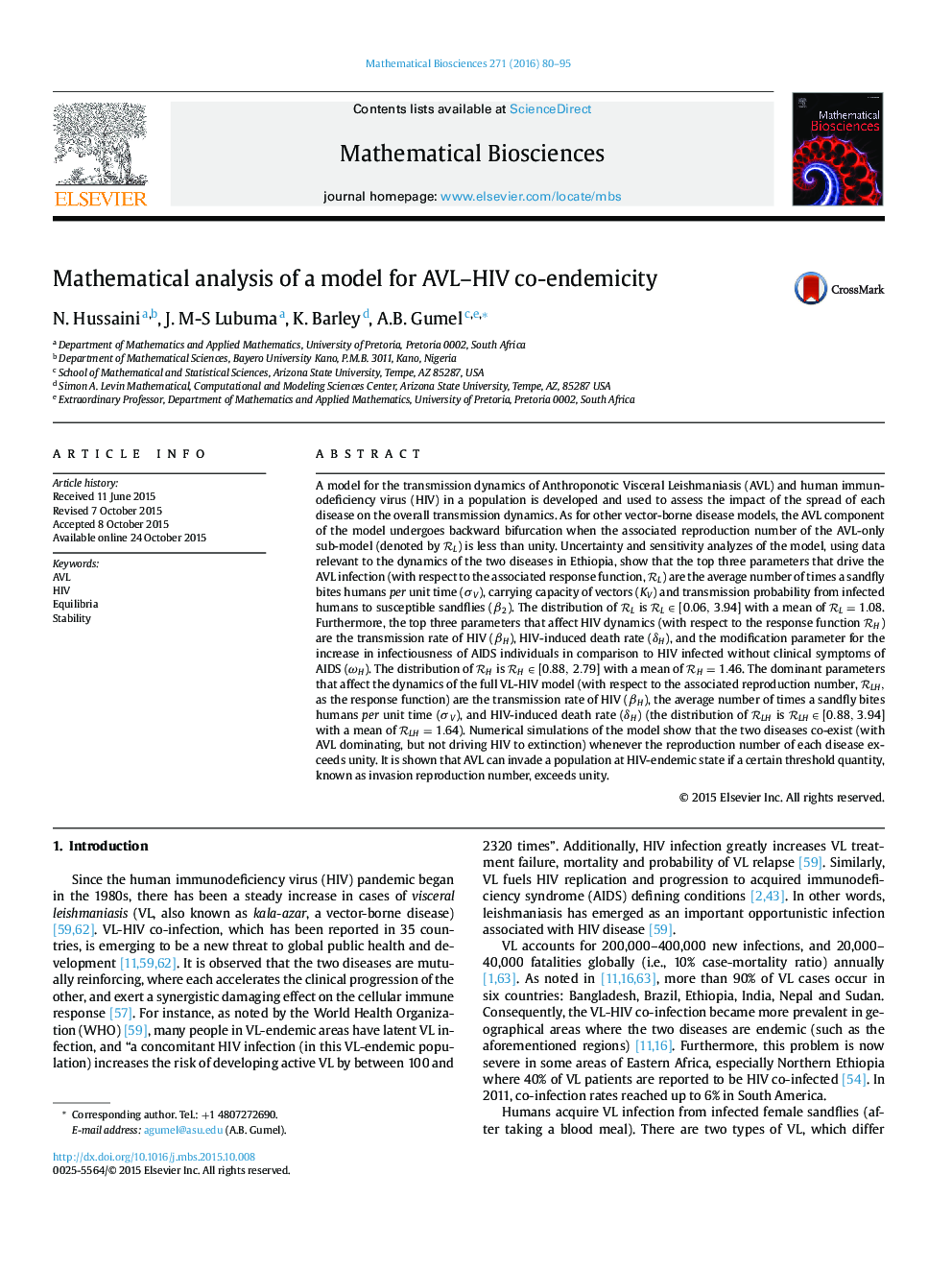| کد مقاله | کد نشریه | سال انتشار | مقاله انگلیسی | نسخه تمام متن |
|---|---|---|---|---|
| 6371865 | 1624009 | 2016 | 16 صفحه PDF | دانلود رایگان |
عنوان انگلیسی مقاله ISI
Mathematical analysis of a model for AVL-HIV co-endemicity
دانلود مقاله + سفارش ترجمه
دانلود مقاله ISI انگلیسی
رایگان برای ایرانیان
موضوعات مرتبط
علوم زیستی و بیوفناوری
علوم کشاورزی و بیولوژیک
علوم کشاورزی و بیولوژیک (عمومی)
پیش نمایش صفحه اول مقاله

چکیده انگلیسی
A model for the transmission dynamics of Anthroponotic Visceral Leishmaniasis (AVL) and human immunodeficiency virus (HIV) in a population is developed and used to assess the impact of the spread of each disease on the overall transmission dynamics. As for other vector-borne disease models, the AVL component of the model undergoes backward bifurcation when the associated reproduction number of the AVL-only sub-model (denoted by RL) is less than unity. Uncertainty and sensitivity analyzes of the model, using data relevant to the dynamics of the two diseases in Ethiopia, show that the top three parameters that drive the AVL infection (with respect to the associated response function, RL) are the average number of times a sandfly bites humans per unit time (ÏV), carrying capacity of vectors (KV) and transmission probability from infected humans to susceptible sandflies (β2). The distribution of RL is RLâ[0.06,3.94] with a mean of RL=1.08. Furthermore, the top three parameters that affect HIV dynamics (with respect to the response function RH) are the transmission rate of HIV (βH), HIV-induced death rate (δH), and the modification parameter for the increase in infectiousness of AIDS individuals in comparison to HIV infected without clinical symptoms of AIDS (ÏH). The distribution of RH is RHâ[0.88,2.79] with a mean of RH=1.46. The dominant parameters that affect the dynamics of the full VL-HIV model (with respect to the associated reproduction number, RLH, as the response function) are the transmission rate of HIV (βH), the average number of times a sandfly bites humans per unit time (ÏV), and HIV-induced death rate (δH) (the distribution of RLH is RLHâ[0.88,3.94] with a mean of RLH=1.64). Numerical simulations of the model show that the two diseases co-exist (with AVL dominating, but not driving HIV to extinction) whenever the reproduction number of each disease exceeds unity. It is shown that AVL can invade a population at HIV-endemic state if a certain threshold quantity, known as invasion reproduction number, exceeds unity.
ناشر
Database: Elsevier - ScienceDirect (ساینس دایرکت)
Journal: Mathematical Biosciences - Volume 271, January 2016, Pages 80-95
Journal: Mathematical Biosciences - Volume 271, January 2016, Pages 80-95
نویسندگان
N. Hussaini, J. M-S Lubuma, K. Barley, A.B. Gumel,